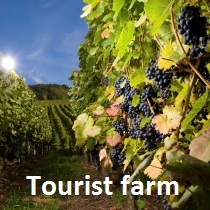SloveniaHolidays.com > Info > Transport in the country
Travelling by car
Slovenia has a rich road network, so travelling by car may be the ideal way to get to know the country. In total there are 1356 km of main roads, 3391 km of regional and 9554 km of local roads in the country. The framework of the whole road network is the traffic intersection with the international marks E 57 (Maribor – Celje – Ljubljana – Koper) and E 61 (Jesenice – Ljubljana – Obrežje). On these road connections there are in total 441.8 km of motorway sections (June 2005), some of them still in the process of construction. These are toll roads.

The roads in Slovenia are in good condition, well equipped with signs; at the roads there are numerous service areas, boarding houses, hotels to spend the night in, as well as petrol stations.
The Tunnel Karavanke enables a quick connection of Slovenia with the rest of Europe, joining the Slovenian road network with the Austrian and Germen one.
In bigger towns and on some main road sections there is increased traffic during daily rush hours (in the morning, afternoon) as well as at weekends and holidays.
Within the area of the Republic of Slovenia the following traffic regulations must be respected:
Speed limitations:
- within cities/towns 50 km/h
- regional roads 90 km/h
- express ways 100 km/h
- motorways 130 km/h
- Fastening safety belts is obligatory on all seats where the safety belt is integrated.
- Obligatory car equipment includes: safety triangle, a spare batteries kit and a first-aid kit, in winter time also snow chains.
- Professional drivers (taxi, bus, truck) are prohibited to drive under alcohol influence, whereas for other drivers the maximum blood alcohol level is 1/2 promile.
- Obligatory use of dimmed headlights when driving, during the day time, as well.
- Obligatory use of motorist helmet for drivers and fellow passengers on motor bikes.
The supply of petrol is good. The petrol stations Petrol or OMV Istrabenz are situated in all Slovenian towns and are usually open between 7 and 19 o'clock. At the motorways, highways and radial highways they are open non-stop, around the clock. All petrol stations have unleaded petrol named Eurosuper 95 or 98. Apart from petrol, car oil and standard spare parts you can also buy car cosmetics, food, drinks, newspapers and other things there. There are also toilet facilities.
The information about the traffic on the Slovenian roads is regularly provided by different local radio stations throughout Slovenia. During the tourist season, "Radio Slovenia" provides information about the situation on the roads every other hour in Slovene, English, German and Italian languages. Information about the situation on the roads can also be acquired from several websites, e.g. that of DARS, Motorway Company of the Republic of Slovenia, and AMZS, Automobile Association of Slovenia.
If break-downs and accidents should happen on the road, call AMZS, the Automobile Association of Slovenia, on the phone number 1987. Next to motorways orange phone boxes can be found every 500 m. AMZS provides assistance on the road 24 hours a day. Automobile mechanics of AMZS will repair your vehicle on the spot, or, if this is not possible, in their nearest business unit. In case of road accidents with injuries or casualties, first position the warning signs (safety triangle) and then call the police on the phone number 113.
At airports and at specialised agencies in cities you can rent cars of different car marks and categories. The renting conditions are the same as in all other European countries.
Rent a car
Taxi service
Taxi service is well developed in all major towns and tourist resorts. The pricelist of services is uniform. The taxi metre is an obligatory device, which the taxi driver should start once you are seated in the car. Taxis usually do not drive around towns, but can be found in certain designated areas near bus and railway stations, airports, hotels, etc.
Taxi service vehicles wear a TAXI sign.
On the Slovenian-Italian border
- Predel/Predil, 1156 m
On the Slovenian-Austrian border
- Korensko sedlo/Wurzenpass, 1073 m
- Ljubelj/Loibl, 1067 m
- Jezersko/Seeberg Sattel, 1218 m
- Kranjska Gora – Trenta over the mountain pass Vršič (1611 m, closed during winter) joins the valleys of Sava and Soča,
- Road to Mangart (Koča na Mangartu, 1906 m),
- Bohinjska Bistrica – Železniki over the mountain pass Bohinjsko sedlo (1277 m),
- Solčava – Črna over the mountain pass Spodnje Sleme (1254 m).







